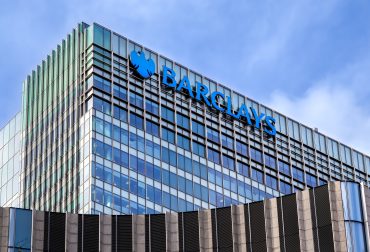

Bank of America’s sentiment indicator reflects Wall Street’s growing confidence in equity markets despite lingering economic concerns
Key Takeaways
- Equity sentiment rises to 55.6% in June according to Bank of America’s Sell Side Indicator, marking the second consecutive monthly increase and positioning closer to a contrarian “Sell” signal than “Buy” territory.
- Fund managers most pessimistic on US dollar since 2005 with net positioning at 20-year lows, while the Dollar Index has declined over 9% year-to-date amid structural rotation into international markets.
- Soft landing expectations surge to 61% of fund managers in June, up from 37% in April, as trade war recession fears ease and cash holdings drop to three-month lows.
Introduction
Wall Street strategists are growing more optimistic about equities, but their cautious positioning suggests markets may face headwinds ahead. Bank of America’s Sell Side Indicator rose to 55.6% in June from 55.1% the previous month, marking the second consecutive increase in recommended equity allocations.
The indicator now sits slightly above its 15-year average of 54.6% but remains in neutral territory. More significantly, current levels position the market closer to a contrarian “Sell” signal than a “Buy” zone, with strategists Victoria Roloff and Savita Subramanian noting the indicator is “2.8 percentage points vs. 3.8 percentage points” from respective thresholds.
This sentiment shift coincides with dramatic changes in currency positioning, as global fund managers express their most bearish outlook on the US dollar in nearly two decades. The convergence of improved equity sentiment and dollar pessimism signals a potential inflection point for global asset allocation strategies.
Key Developments
The June reading represents a measured recovery from April’s sharp decline, when escalating trade tensions drove the indicator lower. May’s 56 basis point increase to 55.1% began the current upward trend, supported by easing US-China trade tensions and renewed policy optimism.
Despite the sequential improvements, equity sentiment continues to lag market performance. The S&P 500 closed June at all-time highs, yet the Sell Side Indicator remains 1.4 percentage points below its 2025 peak of 57.0% reached earlier this year.
Fund manager behavior reflects this cautious optimism, with the Global Fund Manager Survey sentiment index climbing from 2.5 to 3.3 in June. This marks the highest reading since March and represents the largest monthly gain of 2025. Cash holdings dropped to three-month lows as allocations shifted toward emerging market equities, energy, and banking stocks.
Market Impact
The S&P 500 delivered its strongest monthly performance since November 2023, gaining more than 6% in May as sentiment began improving. Current positioning suggests potential 12-month returns of approximately 13% based on historical patterns when the indicator operates in neutral territory.
Currency markets reflect the most dramatic shift in positioning. The US Dollar Index has declined over 9% year-to-date, coinciding with fund managers reaching their most underweight dollar positioning since January 2005. This represents a decisive pivot toward non-dollar assets amid concerns about policy uncertainty.
International equity markets are benefiting from this rotation, with 54% of fund managers selecting international equities as the top-performing asset class over the next five years. Eurozone stocks gained particular momentum from Germany’s fiscal stimulus measures, breaking the “US exceptionalism” narrative that dominated recent years.
Strategic Insights
Bank of America’s historical analysis reveals the contrarian nature of the Sell Side Indicator’s predictive power. When the indicator reaches “Sell” territory, subsequent 12-month S&P 500 returns averaged just 2.7%, compared to 20.5% in “Buy” territory and 12.8% when neutral.
The current positioning suggests institutional caution despite market strength. Equity sentiment remains below the typical 60-65% allocation range for balanced funds, indicating room for further increases if economic conditions continue improving.
Technology sector dynamics add complexity to the outlook, with companies allocating substantial resources to artificial intelligence initiatives. Bank of America itself has committed $4 billion to AI projects, representing nearly one-third of its technology budget, while over 90% of employees now use internal AI assistants.
Expert Opinions and Data
Strategists Victoria Roloff and Savita Subramanian emphasize the indicator’s current neutral positioning masks underlying caution. They note that parts of the market “may not have fully priced in potential policy benefits,” suggesting selective opportunities remain despite elevated valuations.
The shift in economic expectations proves particularly striking. Soft landing expectations surged to 61% of fund managers in June, with the share of respondents anticipating this outcome rising to 66% from just 37% in April. This dramatic reversal contrasts sharply with conditions two months prior, when nearly half anticipated a hard landing.
Risk perceptions continue evolving, with 47% of fund managers viewing trade war-induced recession as the primary tail risk, down from 80% in April. Rate hikes driven by persistent inflation remain the second-largest concern at 17%, followed closely by credit event fears at 16%.
Conclusion
The June sentiment data reveals a market in transition, with strategists growing more constructive on equities while maintaining defensive positioning. The combination of improving sentiment metrics and persistent caution suggests institutional investors remain selective in their approach to risk-taking.
Currency positioning represents the most decisive shift, with dollar pessimism reaching levels not seen in two decades. This structural rotation toward international assets coincides with growing confidence in non-US economic prospects, particularly in Europe where fiscal stimulus measures are gaining traction.
The current environment presents a balanced risk-reward profile, with sentiment improvements supporting near-term performance while elevated valuations and policy uncertainties warrant continued vigilance. Fund managers’ cautious optimism reflects this nuanced landscape, positioning for growth while preparing for potential volatility ahead.








